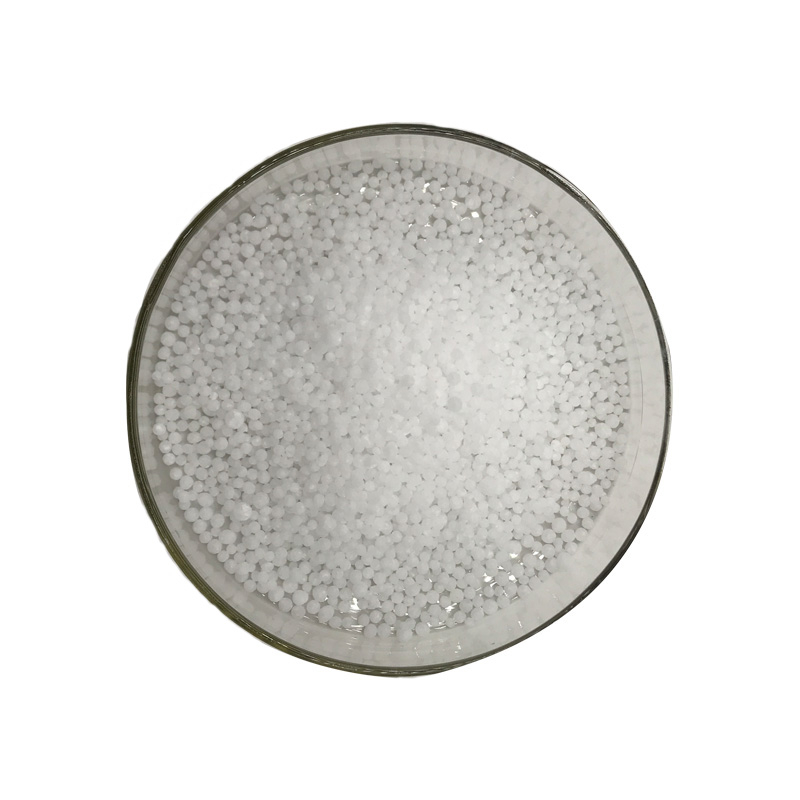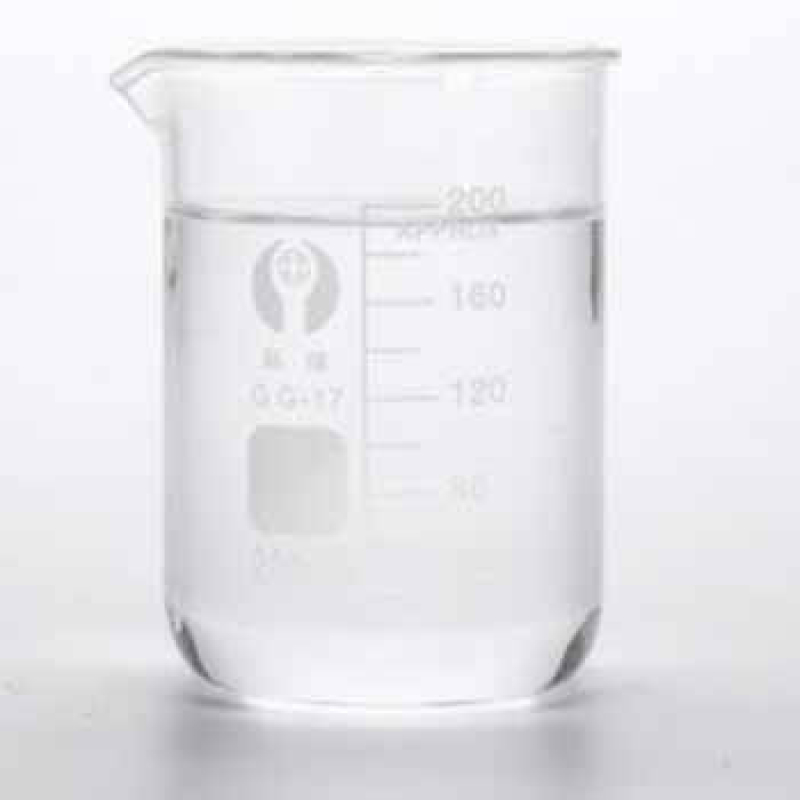Methylcyclohexane CAS#108-87-2Methylcyclohexane, an alkene, is a colorless liquid with a faint benzene-like odor. The smell thre-shold is 630 ppm (this is above the OEL). Molecularweight = 98.21; Specific gravity (H2O:1)= 0.77; Boilingpoint = 101℃; Freezing/Melting point= - 127℃; Vaporpressure= 37 mmHg at 20℃; Flash point= - 3.9℃ (cc),- 5.9℃ (oc); Autoignition temperature = 258℃. Explosivelimits: LEL= 1.2%; UEL = 6.7%.
Contact Now
Products Description of Lithium Aluminum Hydride CAS#16853-85-3Lithium aluminum hydride is a commonly used reducing agent in organic chemistry. It can reduce a variety of functional group compounds. It can also act on double-bond and triple-bond compounds to achieve hydroalumination. In addition, lithium aluminum hydride can also participate in the reaction as a base. For example, react LiAlH4 with 2 mol of ethanol to generate lithium diethoxyaluminum hydride [LiAlH2(OC2H5)2]; react with 3 mol of tert-butanol to generate lithium tri-tert-butoxyaluminum LiAlH[OC(CH3)3]3.
Contact Now
2-Bromo-6-methoxypyridine Chemical PropertiesBoiling point 206 °C (lit.)density 1.53 g/mL at 25 °C (lit.)refractive index n20/D 1.559(lit.)Fp 220 °Fstorage temp. Inert atmosphere,Room Temperaturepka-1.04±0.10(Predicted)form Liquidcolor Clear colorless to goldenInChIInChI=1S/C6H6BrNO/c1-9-6-4-2-3-5(7)8-6/h2-4H,1H3InChIKeyKMODISUYWZPVGV-UHFFFAOYSA-NSMILESC1(Br)=NC(OC)=CC=C1CAS DataBase Reference40473-07-2(CAS DataBase Reference)Safety InformationHazard Codes Xi,T,XnRisk Statements 36/37/38-20/21/22Safety Statements 26-36WGK Germany
Contact Now
Products Description of PRL-8-53 CAS#51352-87-5White crystal powderPRL-8-53 Chemical Propertiesstorage temp. under inert gas (nitrogen or Argon) at 2-8°Csolubility DMF: 30 mg/ml DMSO: 30 mg/ml Ethanol: 30 mg/ml PBS (pH 7.2): 10 mg/mlform A crystalline solidInChIInChI=1S/C18H21NO2.ClH/c1-19(14-16-7-4-3-5-8-16)12-11-15-9-6-10-17(13-15)18(20)21-2;/h3-10,13H,11-12,14H2,1-2H3;1HInChIKeyHLBBSWSJLPLPRU-UHFFFAOYSA-NSMILESC(OC)(=O)C1=CC=CC(CCN(CC2=CC=CC=C2)C)=C1.[H]ClFactory and Equipment ShowFast delivery timeInventory 2-3 working days New production 7-10 working days
Contact Now
2-Ethylhexyl Nitrate CAS#27247-96-7Mainly used as cetane number improver for diesel fuel. Adding an appropriate amount of 2-ethylhexyl nitrate to diesel can significantly increase the cetane number of diesel and improve the combustion performance of diesel.
Contact Now
Products Description of Urea CAS#57-13-6When the temperature is below 20℃ and the relative humidity is below 70%, urea not only does not absorb moisture, but also evaporates water to reduce its water content; when the temperature exceeds 20℃ and the relative humidity is higher than 80%, it begins to absorb moisture, and in severe cases, it becomes a paste. When the air turns dry again, it will re-agglomerate, and its degree is second only to ammonium nitrate.
Contact Now
Products Description of Oleic CAS#112-80-1Insoluble in water, soluble in benzene, chloroform, miscible with methanol, ethanol, ether and carbon tetrachloride. Because it contains double bonds, it is easily oxidized by air, producing an unpleasant odor and turning yellow. When treated with nitrogen oxides, nitric acid, mercurous nitrate and sulfurous acid, it can be converted into oleic acid. When hydrogenated, it becomes stearic acid. The double bonds can easily react with halogens to form halogenated stearic acid.
Contact Now
Products Description of 2-Chlorophenol CAS#95-57-8 o-Chlorophenol is a colorless to yellow-brown liquid, m.p.8.7℃, b.p.175℃, n25D 1.5565, relative density 1.265.
Contact Now
Products Description of Chlorobutanol CAS#57-15-8Colorless crystals. There are two types of crystals: containing half molecular crystal water and anhydrous. The melting point of the containing half molecular crystal water type is 78℃, slightly soluble in water (1:250), easily soluble in ethanol (1:1), glycerol (1:10), ether, chloroform and volatile oil. The melting point of the anhydrous type is 97℃, the boiling point is 167℃, and the 135℃ (32.7kPa).
Contact Now
Products Description of [1,2,4]TRIAZOLO[1,5-A]PYRIMIDINE-2-CARBOXYLIC ACID CAS#202065-25-6[1,2,4]Triazolo[1,5-a]pyrimidine-2-carboxylic acid is a chemical.Molecular Formula is C6H4N4O2.[1,2,4]TRIAZOLO[1,5-A]PYRIMIDINE-2-CARBOXYLIC ACID Chemical Propertiesdensity 1.79±0.1 g/cm3(Predicted)form powderpka-4.67±0.41(Predicted)color CreamSafety InformationHazard Codes XiRisk Statements 43Safety Statements 36/37HazardClass IRRITANTHS Code 2933998090Product Application of [1,2,4]TRIAZOLO[1,5-A]PYRIMIDINE-2-CARBOXYLIC ACID CAS#202065-25-6[1,2,4]Triazolo
Contact Now
Products Description of Vinylbenzyl chloride CAS#30030-25-2Chloromethylvinylbenzene can be used as an organic synthesis intermediate and a pharmaceutical intermediate, mainly used in laboratory research and development processes and chemical production processes.Vinylbenzyl chloride Chemical PropertiesMelting point -30°CBoiling point 229 °C(lit.)density 1.074 g/mL at 25 °C(lit.)vapor density 5.3 (vs air)vapor pressure 1 mm Hg ( 56.1 °C)refractive index n20/D 1.572(lit.)Fp 221 °Fstorage temp. -20°Csolubility Acetonitrile (Slightly
Contact Now
Products Description of BISPHENOL A ETHOXYLATE DIMETHACRYLATE CAS#41637-38-1Colorless liquidBISPHENOL A ETHOXYLATE DIMETHACRYLATE Chemical Propertiesdensity 1.12 g/mL at 25 °C(lit.)refractive index n20/D 1.532Fp >230 °Fstorage temp. 2-8°CEPA Substance Registry SystemPoly(oxy-1,2-ethanediyl), .alpha.,.alpha.'-[(1-methylethylidene)di-4,1-phenylene]bis[.omega.-[(2-methyl-1-oxo-2-propenyl)oxy]- (41637-38-1)Safety InformationHazard Codes XiRisk Statements 36/37/38-43Safety Statements 26-36WGK Germany 3 Factory and Equ
Contact Now
Products Description of Triethylamine CAS#121-44-8 Triethylamine (molecular formula: C6H15N), also known as N,N-diethylethylamine, is the simplest homotrisubstituted tertiary amine. It has the typical properties of tertiary amines, including salt formation and oxidation. Triethylamine has no reaction in the Hisberg reaction. It is a colorless to light yellow transparent liquid with a strong ammonia odor and a slight smoke in the air. Boiling point: 89.5℃, relative density (water = 1): 0.70, relative density (air = 1): 3.48, slightly soluble in water, soluble in ethanol and ether.
Contact Now
Products Description of Myristoyl chloride CAS#112-64-1Prepared by the reaction of myristic acid and phosphorus trichlorideMyristoyl chloride Chemical PropertiesMelting point -1 °C (lit.)Boiling point 250 °C/100 mmHg (lit.)density 0.908 g/mL at 25 °C (lit.)refractive index n20/D 1.449(lit.)Fp >230 °Fstorage temp. −20°Cform Liquidcolor Clear colorless to light yellow-brownWater Solubility MAY DECOMPOSEBRN 636924InChIKeyLPWCRLGKYWVLHQ-UHFFFAOYSA-NCAS DataBase Reference112-64-1(CAS DataBase Reference)NIST Chemistry ReferenceMyris
Contact Now
Products Description of D-(-)-ERYTHROSE CAS#583-50-6D-erythrose-4-phosphate is an intermediate in the enzymatic conversion of carbohydrates.D-(-)-ERYTHROSE Chemical PropertiesMelting point <25℃Boiling point 144.07°C (rough estimate)alpha D20 +1° -14.5° (3 days, c = 11)density 1.0500 (rough estimate)refractive index 1.498storage temp. 2-8°Csolubility Methanol, Waterform syruppka12.49±0.20(Predicted)color light yellowWater Solubility Fully miscible in water.Sensitive HygroscopicMerck 14,3690BRN 1721698CAS DataBase Reference
Contact Now
Products Description of 2,3-Difluorophenol CAS#6418-38-82,3-Difluorophenol is a chemical substance.2,3-Difluorophenol Chemical PropertiesMelting point 39-42 °C (lit.)Boiling point 54 °C/25 mmHg (lit.)density 1.2483 (estimate)Fp 134 °Fstorage temp. Inert atmosphere,2-8°Cpka7.71±0.10(Predicted)form powder to lump to clear liquidcolor White or Colorless to Almost white or Almost colorlessBRN 2082265InChIKeyRPEPGIOVXBBUMJ-UHFFFAOYSA-NCAS DataBase Reference6418-38-8(CAS DataBase Reference)Safety InformationHazard Codes F,Xn,Xi,CRisk Statements&
Contact Now
Products Description of OP 935 CAS#225789-38-8 As a new type of phosphorus-based flame retardant, diethylaluminum hypophosphite has high thermal stability, chemical stability and environmental friendliness, and can be used as an excellent polymer material flame retardant to replace environmentally harmful halogen flame retardants.OP 935 Chemical PropertieWater Solubility 1.6g/L at 25℃CAS DataBase Reference225789-38-8Product Application of OP 935 CAS#225789-38-8 The main chemical bonds in the structure of diethyl aluminum hypophosphite are P-C, P=O, P-O, and its flame r
Contact Now
Products Description of Coconut oil CAS#8001-31-8Coconut oil is an oil extracted from coconut pulp (dry pulp contains about 63% to 70% oil). It is a white semi-solid lard-like fat. It has a unique coconut fragrance. The main components are glycerides of lauric acid, myristic acid, and oleic acid. The melting point is 23 to 28°C. The relative density is 0.917 to 0.919 (25/25°C). The saponification value is 250 to 264. The iodine value is 8 to 12. The acid value does not exceed 6. It is soluble in alcohol, chloroform, ether, and carbon disulfide, but insoluble in water.
Contact Now
Products Description of 5-Bromo-8-nitroisoquinoline CAS#63927-23-1It is a light yellow solid powder at room temperature and pressure.
Contact Now
Products Description of POLYCARBOMETHYLSILANE CAS#62306-27-8Transparent oily liquidPOLYCARBOMETHYLSILANE Chemical PropertiesMelting point 79-84 °Cdensity 1.1 g/mL at 25 °C(lit.)Product Application of POLYCARBOMETHYLSILANE CAS#62306-27-8Silicon carbide ceramic polymer precursors. Ceramic coatings from polymer melts or solutions.Factory and Equipment ShowFast delivery timeInventory 2-3 working days New production 7-10 working days
Contact Now
Products Description of Noopept CAS#157115-85-0N-(1-(phenylacetyl)-L-prolyl)glycine ethyl ester is marketed under the trade name NOOPEPT and is used to treat obesity, alcohol dependence, degeneration, or toxic injuries.Noopept Chemical PropertiesMelting point 94.0 to 98.0 °CBoiling point 547.3±50.0 °C(Predicted)density 1.202±0.06 g/cm3(Predicted)storage temp. -20°Csolubility Soluble in DMSO (up to 25 mg/ml)form powderpka13.41±0.20(Predicted)color white to beigeoptical activity[α]/D -115 to -125°, c = 0.5 in chloroform-dStability:Stable for 1 year from da
Contact Now
Products Description of Isosorbide dimethyl ether CAS#5306-85-4 Isosorbide dimethyl ether is a colorless oily liquid. It is very stable under neutral conditions, hygroscopic, and miscible with many organic solvents. It is often used as a solvent. DMI can promote the penetration of active ingredients into the epidermis of the skin and give full play to the effectiveness of active ingredients.
Contact Now
Products Description of Spermine CAS#71-44-3 Spermine is a polyamine substance containing two amino groups and two imino groups. It is produced in the body by putrescine (butanediamine) and S-adenosylmethionine catalyzed by various enzymes. It and spermidine are both present in bacteria and most animal cells and are important substances that promote cell proliferation. Under acidic conditions, it exhibits the characteristics of polycationic polyamines and can bind to DNA in viruses and bacteria.
Contact Now
4,4'-DIBROMO-2,2'-BIPYRIDINE Chemical PropertiesMelting point 138.0 to 142.0 °CBoiling point 362.9±37.0 °C(Predicted)density 1.809±0.06 g/cm3(Predicted)storage temp. Keep in dark place,Sealed in dry,Room Temperaturesolubility soluble in Tolueneform powder to crystalpka2.59±0.18(Predicted)color White to Light yellowInChIInChI=1S/C10H6Br2N2/c11-7-1-3-13-9(5-7)10-6-8(12)2-4-14-10/h1-6HInChIKeyKIIHBDSNVJRWFY-UHFFFAOYSA-NSMILESC1(C2=NC=CC(Br)=C2)=NC=CC(Br)=C1CAS DataBase Reference18511-71-2Safety InformationRisk Statements 36/37/38Safety Statements&nb
Contact Now











![[1,2,4]TRIAZOLO[1,5-A]PYRIMIDINE-2-CARBOXYLIC ACID CAS#202065-25-6](https://d3rnfhc14zcmdf.cloudfront.net/cdn/ff/oLGUsn18qGlr6xFpfvjw88ruuxs7GrtvunO9beYlPGM/1717583118/public/styles/chanpinzhutu/public/2024-06/photobank%20%282%29_1.jpg?itok=-1jJhH8M)





















